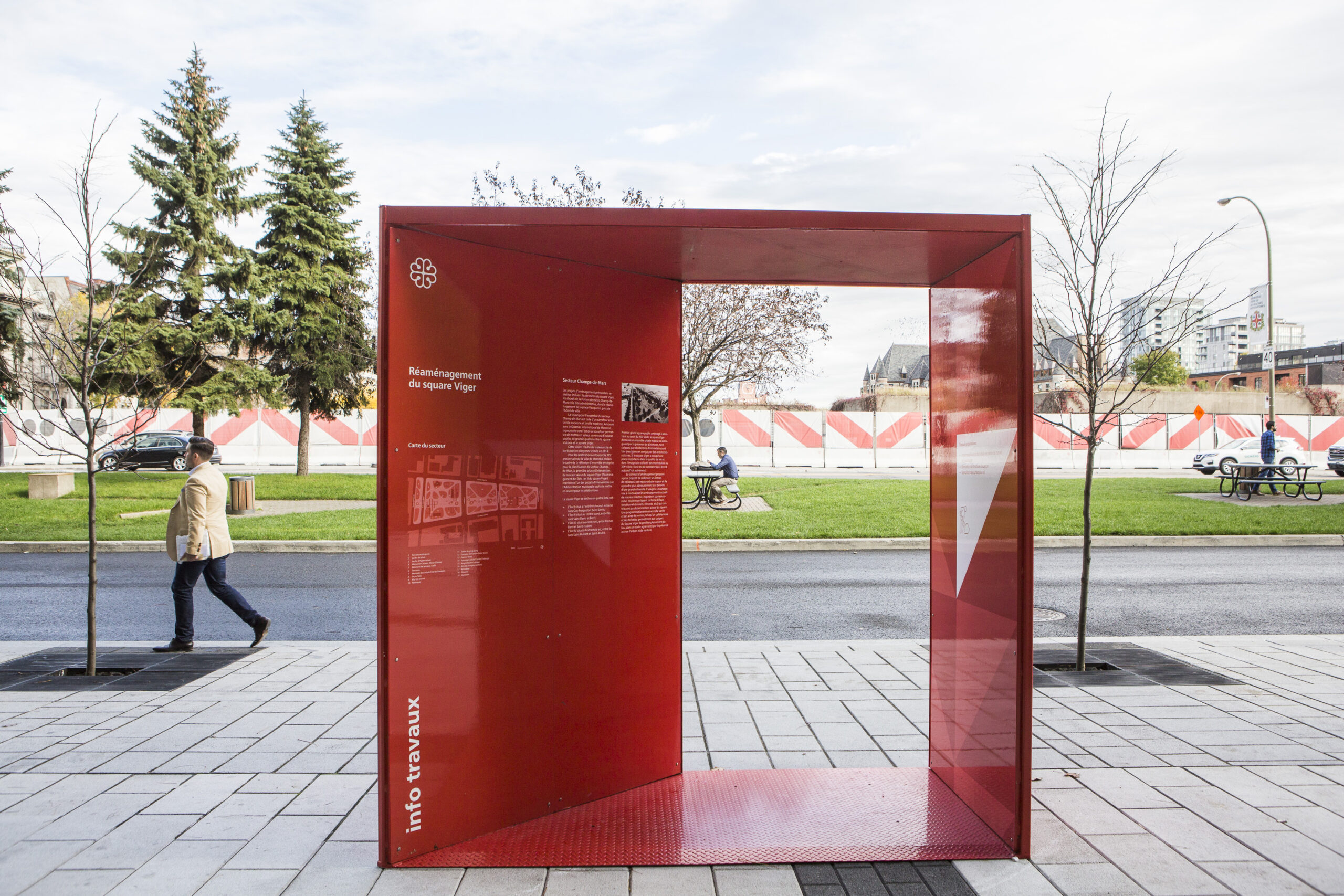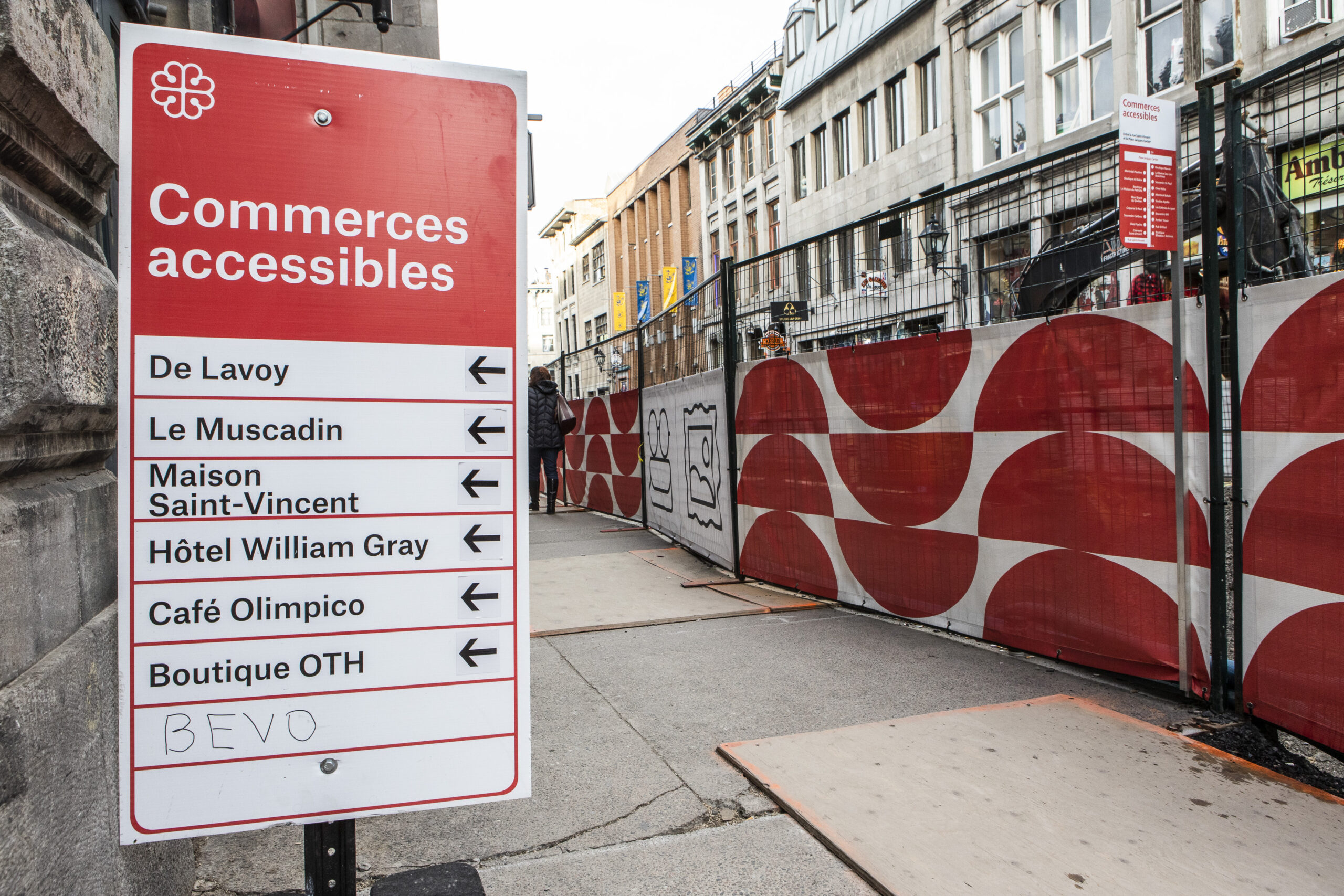
Site information module at Square Viger
© Mathieu Rivard
Theme:
Design and construction sites
UN sustainable development goal:
- Goal 11. Make cities and human settlements inclusive, safe, resilient and sustainable
How the case links to the UN sustainable development goal:
Major public infrastructure projects can provide a positive impact on a city’s sustainability, however creating negative social and economic outcomes during their construction. The toolbox to better inform, delimit and orient on a construction site aims to provide safe, inclusive and accessible public spaces in their vicinity as well as to support positive economic development during the infrastructure project implementation period.
Objectives:
The purpose of the toolkit is to improve the visual and functional quality of the living environment in the vicinity of worksites. Its various components aim to better inform about the nature of the project, to better circumscribe the construction area and to to better direct users.
What Was Done:
Over the recent years, a steep increase in the number of municipal worksites has highlighted the environment quality and economic development issues raised by citizens and shop owners living in their vicinity. Answering this renewed interest in worksite impacts mitigation, multiple devices were designed to address recurrent needs on all public worksites under the city’s responsibility. They aim :
- to better inform Montrealers about the nature of the work and the project;
- to better circumscribe the work area;
- to better orient users and make it easier for them to access various services.
The formats and materials were developed to be consistent with the visual identity of Montréal, and optimized into a system that improves user experience through creation of clear and safe pathways, while facilitating the management and operation of worksites.
How Things Were Done:
Following an international call to best practices (2014), a close collaboration between the city’s Communications department, Infrastructure and Roads department and Bureau du design as well with input from designers in several disciplines was developed to document the issues and possibilities related to impact mitigation of construction sites. An iterative product development process was then initiated and included numerous prototypes implemented in different contexts. Two design competitions were held to further refine the design of the devices :
Training activities and a guidebook were then produced to promote the use of the toolbox by municipal employees. In 2021, after seven years of actions to promote the living environment quality in the vicinity of worksites, the City adopted Montreal’s worksite Charter.
Budget:
Good Practices:
The project succeeded to go beyond the initial involvement of designers in the improvement of the aesthetic quality of worksites by highlighting their role to create a safer and more inclusive environment as well as to promote economic development during major infrastructure projects construction.

Signalisation de chantier rue St-Paul
© Mathieu Rivard

Example of the system implementation on Saint-Hubert Plaza
© Mathieu Rivard

Site information module at Square Viger
© Mathieu Rivard